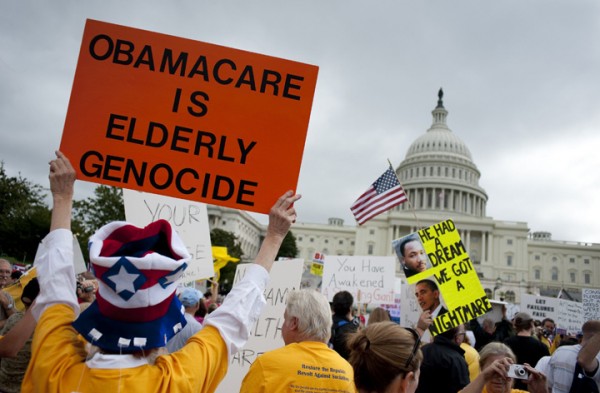
As reported by Lifezette, Sens. Lindsey Graham of South Carolina and Bill Cassidy of Louisiana have been trying to get some traction for their plan for a number of weeks, shortly after the Senate failed to advance a House-passed Obamacare repeal measure earlier this summer. Joining them at a news conference on Wednesday to discuss the plan further were Sen. Dean Heller of Nevada and former Sen. Rick Santorum of Pennsylvania.
“Behind me is the only thing standing between you and single-payer health care,” said Graham. “A band of brothers looking for a sister.”
He was referring to Sen. Bernie Sanders, I-Vt., who on Wednesday offered up his own plan — “Medicare for all” — which is full-on, government-controlled, socialized medicine, which would be an even bigger nightmare than Obamacare. Why anyone would want Washington bureaucrats to have even more control over their healthcare after the Affordable Care Act is beyond me. (Related: Dems lining up behind full-on push for SOCIALIZED medicine, which was the plan ALL along.)
“Bernie, this ends your dream of a single-payer system for America,” said Graham, referring to his own plan, which has won praise from President Donald J. Trump.
“Obamacare has been a complete nightmare for the many Americans who have been devastated by its skyrocketing healthcare premiums and deductibles and canceled or shrinking plans,” he said in a statement Wednesday. “As I have continued to say, inaction is not an option, and I sincerely hope that Senators Graham and Cassidy have found a way to address the Obamacare crisis.”
The Senate is running short of time, however. To avoid a certain Democrat-led filibuster, which would require eight Democrats to join all 52 Republicans to overcome, the Senate has to pass a bill before the end of the current fiscal year on Sept. 30.
“If you believe repealing Obamacare is a good idea,” Graham said, “this is your best and only chance of making it happen. Cause everything else has failed except this approach, which will work if we get behind it.”
Lifezette notes further:
The bill would eliminate the Affordable Care Act tax on medical devices but leave most of the other taxes in place. The federal government then would turn that money over to states, with the flexibility to design their own rules and regulations.
That’s called federalism, by the way — allowing states to self-govern — and it’s one of our founding principles. So Graham got this one right.
The measure requires grants to be based on a state’s population of people who earn between 50 percent and 138 percent of the federal poverty line. Beginning in 2022, the government would then add in a “risk adjustment,” which would send more funds to states with older, sicker populations, because they are more expensive to provide care for. Plus, the plan offers incentives based on how many people enroll for coverage.
Right now, Graham said that 40 percent of all Obamacare taxes go to just four states: California, New York, Massachusetts, and Maryland — and wouldn’t you know it, all four are run by far-Left Democrats. Noting that his bill will slow the growth of Medicaid, Graham said without any changes at all to Obamacare the federal government will be spending upwards of $650 billion on the program by 2027, more than we now spend on defense ($549 billion).
One expert said whether or not the plan would eventually work depends a lot on just how many strings the federal government winds up attaching to it.
“Even if it starts with very few strings attached … it’s hard to see how the states would retain that flexibility over time,” said Edmund Haislmaier, a research fellow at The Heritage Foundation.
Other experts said they believe the plan has a good chance of passing. “I think [the GOP senators] figured out how to thread the needle,” said Grace-Marie Turner, president of the Galen Institute.
We’ll see. Doing nothing is not an option.
J.D. Heyes is a senior writer for NaturalNews.com and NewsTarget.com, as well as editor of The National Sentinel.
Sources include:
Please contact us for more information.























